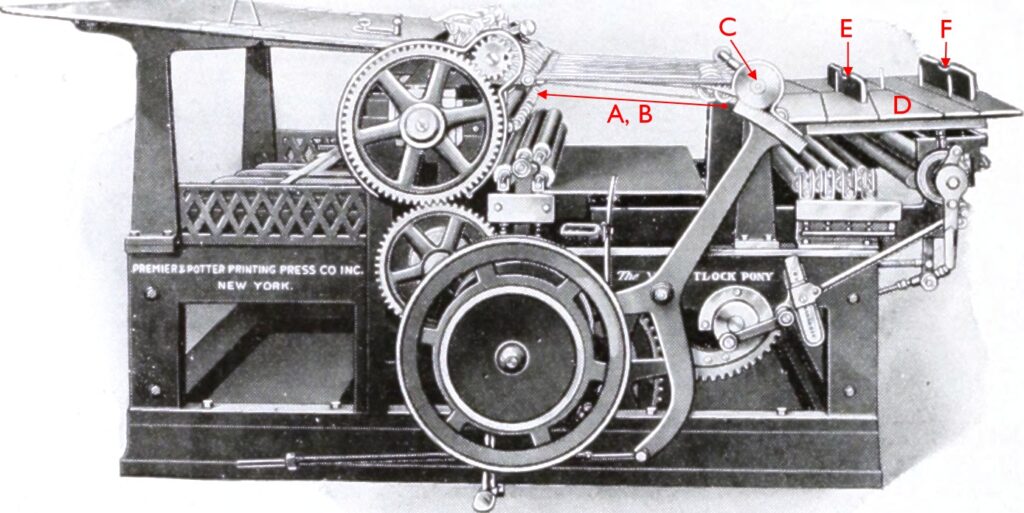The Mackenzie Printery & Newspaper Museum maintains a print shop at the Wainfleet fairgrounds in Wainfleet, Ontario, and one piece of equipment there is a Whitlock 2-rotation cylinder press.
Note that there is a different model of Whitlock press that is generally similar but has some differences, in particular as to how the printed sheets are delivered, so I’m not sure how relevant it would be to this question.
My question concerns the delivery mechanism for the printed sheets on the press illustrated here. As they come off the cylinder, they are carried by a series of tapes A (essentially a conveyor) over a comb of long fingers B. These fingers then rotate half a turn on a shaft C, flipping the printed sheet over and dropping it face down on the delivery table D. A pair of stacker blocks E & F then close up to keep the stack of printed paper neat.
One stacker block (E) can be adjusted to suit the size of the sheet being printed, so for smaller paper, E would be moved towards F, and the latter is always in the same location. However, the conveyor tapes always carry the sheet right up to shaft C, and so when the sheet is flipped it would land on the delivery table right close to the shaft rather than between the stackers.
It seems to me that there should be some sort of stop or guide which limits how far the tapes carry the sheet so that when flipped over it lands between the parted stackers.
However, there are no such guides on our Whitlock, nor do any show in this illustration. It looks like it would perhaps be a couple of small stop tabs that attach to the fingers to stop the sheet motion. They can’t be too bulky because they must fit between the tapes when the fingers are in the position to receive the sheet, and they must also not strike the stacker block E when the fingers flip over to drop the sheet.
So is anyone familiar enough with this model of press to provide any hints or photos? How do other cylinder presses with similar delivery deal with this? An easy design change would have been to have E be the fixed guide and F be the adjustable one; the downside would be that the operator would have to reach farther to remove the stack of printed sheets.


Leave a Reply